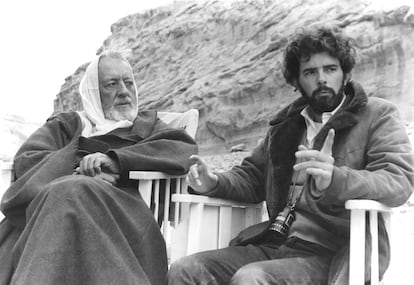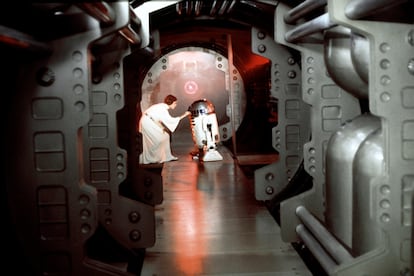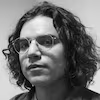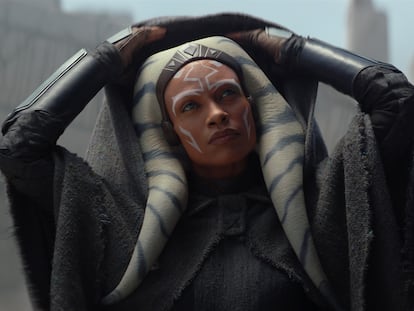Star Wars Day: How editing saved the first film of the franchise
This is the story of how three people (and George Lucas) reshaped one of the most important films of all time

A perfect way to celebrate Star Wars Day is by watching the movies or series of the saga (which by now consists of 11 live-action films, two animated films, four live-action series and more). Fans choose to celebrate by themselves or in groups, while some communities reunite to see special content like rare scenes or different cuts of the films, like “The Lost Cut”, a version of the 1977 film which was an early workprint by editor John Jympson that has become a treasure for fans who want to know more about the production process of the film, and how it compares to the final version people got to see in theaters -before creator and director George Lucas decided to re-edit the films. While there is no real complete version of “the Lost Cut”, as fans refer to it, there are several scenes that are available online which offer a glimpse of the first cut of the film.
In 1976, Star Wars was still filming when Lucas asked John Jympson, the editor he hired because he liked his work on The Beatles’ film A Hard Day’s Night, to cut the film. Jympson took on the job despite Lucas never explaining the film’s material to him. When showing the director the rough cut, Lucas disliked what he saw. According to film historian J.W. Rinzler, Jympson’s style didn’t match with Lucas’ vision, and he didn’t like the director’s style.
Lucas decided to give Jympson more time to work on the film. As production went on, Lucas tried to convince him to work the way he wanted. “Unfortunately it didn’t work out,” Lucas said. “It’s very hard when you are hiring people to know if they are going to mesh with you and if you are going to get what you want. In the end, I don’t think he fully understood the movie and what I was trying to do. I shoot in a very peculiar way, in a documentary style, and it takes a lot of hard editing to make it work.”

After firing Jympson, Lucas replaced him with three editors: Paul Hirsh, a close collaborator of Lucas’ friend, director Brian De Palma; Richard Chew, who worked in One Flew Over the Cuckoo’s Nest; and his wife, Marcia Lucas, who also edited his previous film American Graffiti and was at the time editing New York, New York with Martin Scorsese, also a friend of Lucas’.
Hirsch was just finishing his work on Carrie, by De Palma. He later said that George Lucas was “demoralized” by the production of the film, which, at that point, had different problems. “The shoot had been very difficult for him, and he had even checked into the hospital at one point with chest pains, thinking he was having a heart attack. They turned out to be only anxiety attacks, but they took their toll on him emotionally. In addition, he was unhappy with his UK editor, a solid and experienced pro”. Later, Marcia called him and convinced him to work on the editing of the film.
Jympson’s cut was very different from the final cut they created. Lucas’ script introduced Luke Skywalker presenting his everyday life among his friends (including a close friend of his called Biggs Darklighter who decides to join the rebellion), while he witnessed the space battle above the planet. Watching the cut, Lucas’ wanted to improve the pace, and move the narrative focus to C-3PO and R2-D2. “At the time, to have the first half-hour of the film be mainly about robots was a bold idea.”, he said.
“In the first five minutes, we were hitting everybody with more information than they could handle. There were too many story lines to keep straight: the robots and the Princess, Vader, Luke. So we simplified it by taking out Luke and Biggs.”, said Chew, who also edited the sequence where Han, Luke and Princess Leia jump onto the Millenium Falcon and try to escape while shooting the TIE fighters.

Marcia Lucas was tasked to edit the Battle of Yavin sequence, and she diverted from the originally scripted shot sequence. George Lucas said that “it took her eight weeks to cut that battle. It was extremely complex and we had 40,000 feet of dialogue footage of pilots saying this and that. And she had to cull through all that, and put in all the fighting as well”. When working on that, she said to the director: “If the audience doesn’t cheer when Han Solo comes in at the last second in the Millennium Falcon to help Luke when he’s being chased by Darth Vader, the picture doesn’t work”. Those action sequences changed the history of cinema forever.
She was also responsible for changing the fate of Obi-Wan Kenobi. The character originally was going to flee on the Falcon and then guide Luke via comlink from the Rebel Base, but she suggested that Darth Vader killed him, changing the impact of the third arc. “In the script, Obi-Wan was in the Rebel War Room talking to Luke,” she says. “But I said, ‘He can still say all that stuff he needs to say to Luke.’ I sort of pride myself on killing Obi-Wan Kenobi!”
But even though this task was different from anything that they’ve worked on before, none of them expected the success of the movie. “I had no idea what the movie would do,” Hirsch later said. “We thought we were making it for kids”.
The editing choices made by the team, not only improved the film compared to Jympson’s cut, but it gave the story a new pace and impact. Some credit them for “saving Star Wars”, but others still highlight George Lucas’ vision and innovation, even though he himself still doubted his film.
He famously mentioned to Steven Spielberg that he thought his film Close Encounters of the Third Kind would be more successful, and fearing that Star Wars would fail, he made plans to be in Hawaii with Marcia. It was not until he saw on the news reports of the long lines to see the film that he knew it was a success. Of course, he still didn’t expect everything that followed.
Today “The Lost Cut”, or what we can see of it, gives us a glimpse to an imperfect version of something that -for some- isn’t less than perfect. It allows us to see the work of the three editors, and the choices that they made that resulted in one of the most celebrated movies to this day.
Sign up for our weekly newsletter to get more English-language news coverage from EL PAÍS USA Edition
Tu suscripción se está usando en otro dispositivo
¿Quieres añadir otro usuario a tu suscripción?
Si continúas leyendo en este dispositivo, no se podrá leer en el otro.
FlechaTu suscripción se está usando en otro dispositivo y solo puedes acceder a EL PAÍS desde un dispositivo a la vez.
Si quieres compartir tu cuenta, cambia tu suscripción a la modalidad Premium, así podrás añadir otro usuario. Cada uno accederá con su propia cuenta de email, lo que os permitirá personalizar vuestra experiencia en EL PAÍS.
¿Tienes una suscripción de empresa? Accede aquí para contratar más cuentas.
En el caso de no saber quién está usando tu cuenta, te recomendamos cambiar tu contraseña aquí.
Si decides continuar compartiendo tu cuenta, este mensaje se mostrará en tu dispositivo y en el de la otra persona que está usando tu cuenta de forma indefinida, afectando a tu experiencia de lectura. Puedes consultar aquí los términos y condiciones de la suscripción digital.
More information
Archived In
Últimas noticias
‘Fallout’ or how the world’s largest company turned an anti-capitalist apocalyptic Western into a phenomenon
From inflation to defending migrants: Eileen Higgins and Zohran Mamdani inaugurate the new Democratic resistance against Trump
EU’s prestige at stake with proposal to fund Ukrainian war effort with Russian assets
Mustafa Suleyman: ‘Controlling AI is the challenge of our time’
Most viewed
- ‘El Limones’ and the growing union disguise of Mexican organized crime
- Christian Louboutin: ‘Young people don’t want to be like their parents. And if their parents wear sneakers, they’re going to look for something else’
- ‘We are dying’: Cuba sinks into a health crisis amid medicine shortages and misdiagnosis
- The low-cost creative revolution: How technology is making art accessible to everyone
- A mountaineer, accused of manslaughter for the death of his partner during a climb: He silenced his phone and refused a helicopter rescue










































